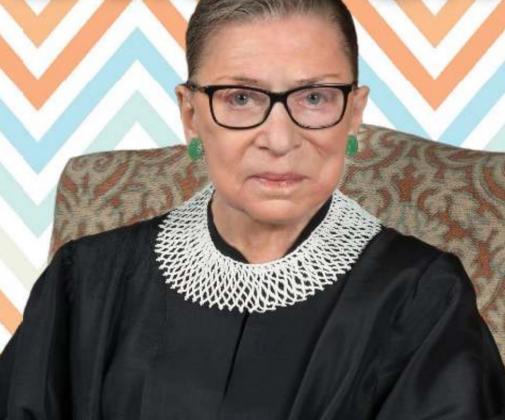1933 - 2020
Many people today, most of them women, owe an unknown debt to Supreme Court Justice Ruth Bader Ginsburg. Ginsburg died Sept. 18 at 87 as the result of an ongoing battle against cancer.
But her life was a battle from the beginning. She was born in Brooklyn, New York, in 1933. Her father sold fur coats, but the Depression was in full swing and her mother worked in a garment factory. Her mother, who taught her to love education, died the day before Ginsburg graduated from high school.
Undaunted, Ginsburg was accepted at Cornell University, where she was top of the class of 1954. The same year, she married Martin Ginsburg, becoming known as Ruth Bader Ginsburg. Martin Ginsburg was in law school at Cornell.
The couple had their first child in 1955, and her husband was drafted for two years in the military. When he returned, RBG began Harvard Law School. Her first year, Martin was diagnosed with cancer, and Ginsburg kept him up on his studies while climbing to the top of her own class at Harvard. She was one of nine women in a class of 500 and was criticized for taking a ‘man’s position’ at the college.
Again, she rose above adversity and became the first female member of the Harvard Law Review. When her husband, recovered from cancer, was hired by a law firm in New York, she transferred to Columbia Law and served on the Law Review there as well. She graduated first in her class in 1959.
Be that as it may, Ginsburg could not find a job until one of her professors would recommend no one else for clerk for District Judge Edmund Palmieri, where she worked for two years. Some other offers were made after that, but at a lower salary than that offered to men. Instead she joined a research project on international civil procedure and studied in Sweden. Back in the States, she taught law at Rutgers University and Columbia Law. Ginsburg worked on the Women’s Rights Project of the ACLU and argued six cases successfully in front of the Supreme Court in the 1970s. She ascended to the bench as a U.S. Court of Appeals judge in 1980 and was appointed to the Supreme Court by Bill Clinton in 1993, the second woman and first Jewish woman to serve.
There she dealt with women’s admission to military academies, and specific areas of discrimination. She maintained social change was not for the courts to enact, but for Congress to create. When a female worker who was being paid far less than males at the same company for the same job, she rebuked Congress for its interpretation of law and helped then-President Obama pass the first piece of legislation he signed to clarify the matter for states.
Ginsburg was diagnosed with pancreatic cancer in 2009 and had never missed a day of oral arguments until 2018, even while undergoing chemotherapy, or the day after her husband Martin passed away in 2010.
Her family plans to hold a private funeral at Arlington National Cemetery, where Ginsburg will be buried next to her husband. Her seat and the bench in front of it have been draped in heavy black cloth. She will lie in repose Wednesday and Thursday at the Supreme Court so that the public may pay its respects. Friday she will lie in state at the National Statuary Hall at the Capitol, an honor reserved for the most respected government officials and military officers. This will be open for invited guests only.
Ruth Bader Ginsburg is the first woman to be accorded this honor, a fitting tribute to a life lived in the pursuit of justice.
Connie Burcham can be reached at Editor@WatongaRepublican.com
“Fight for the things that you care about, but do it in a way that will lead others to join you.”
- Ruth Bader Ginsburg

